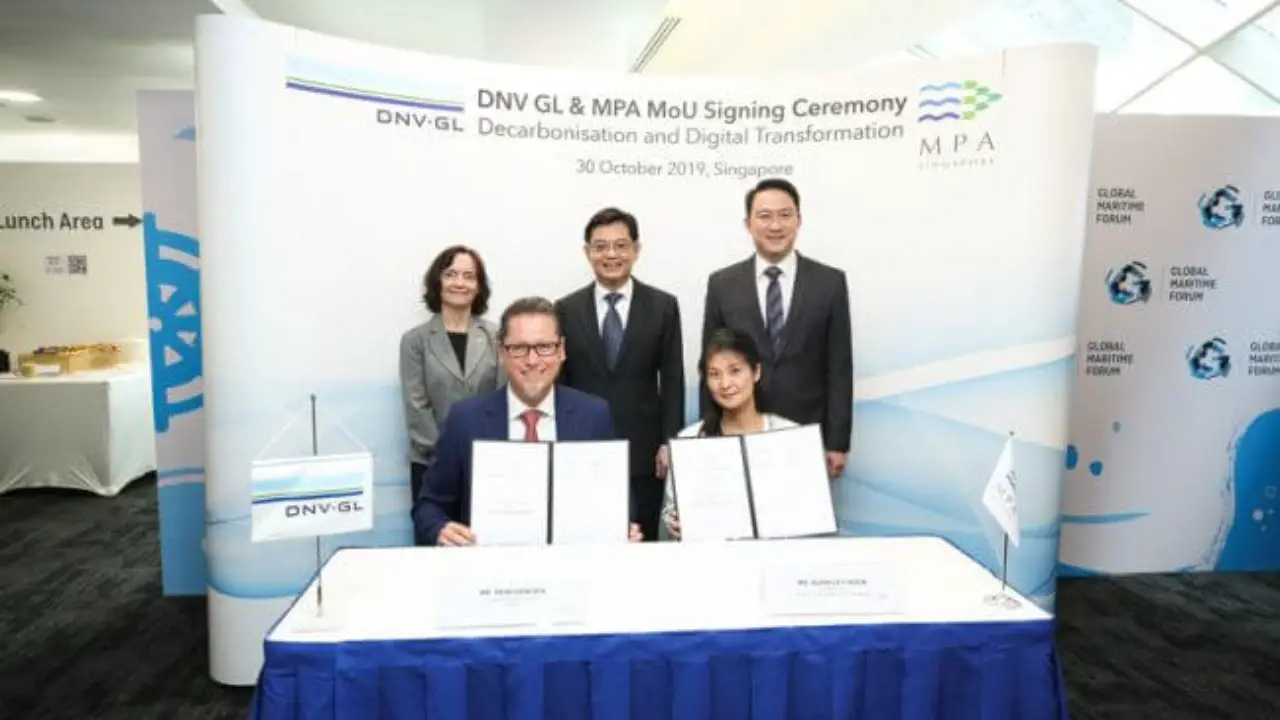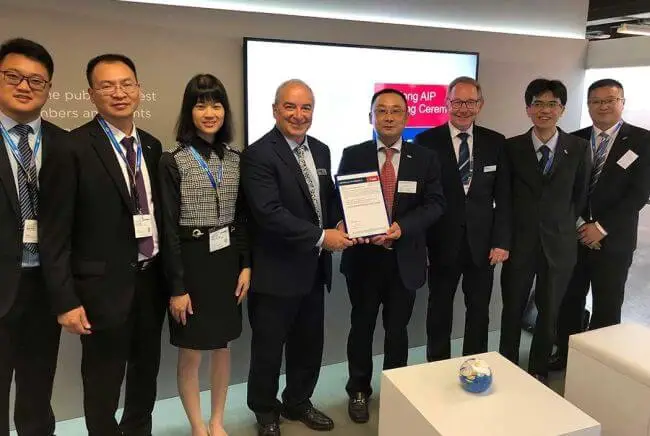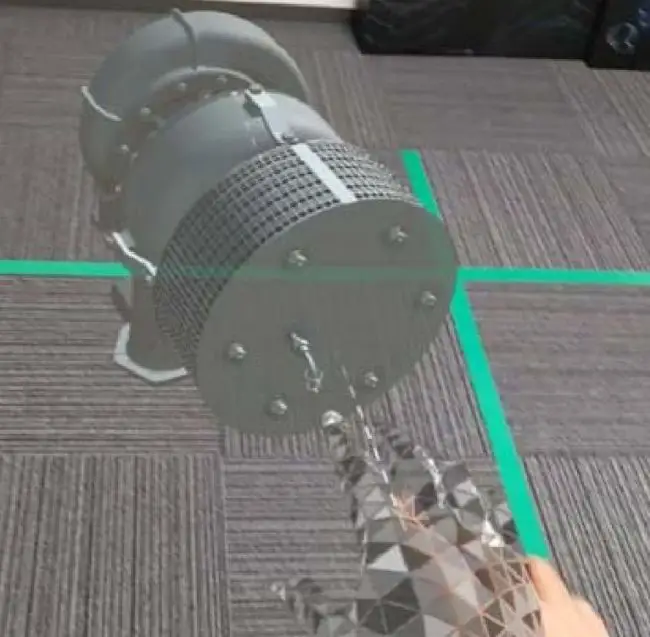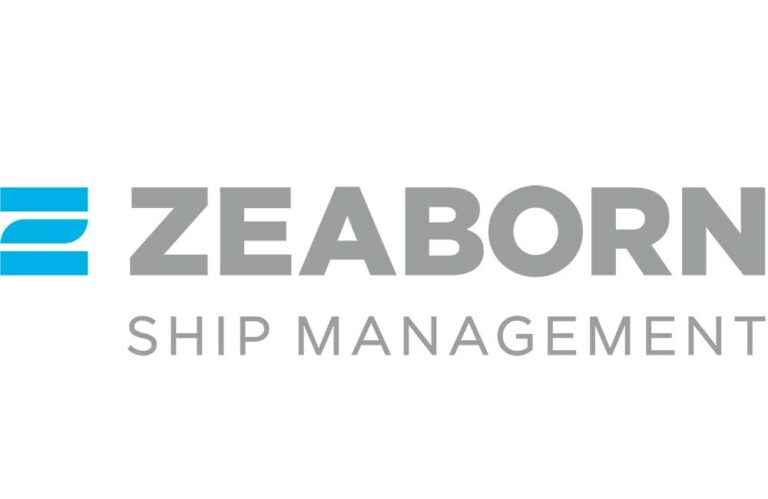DNV GL And MPA Singapore Ink Expanded Maritime R&D; MoU To Promote Decarbonization

DNV GL And MPA Singapore Ink Expanded Maritime R&D; MoU To Promote Decarbonization
For the promotion of decarbonization and for the digital transformation of the shipping industry, the Memorandum of Understanding has been expanded by Singapore’s Maritime Port Authority (MPA) and DNV GL.
The MoU was signed recently by M/S Quah Ley Hoon, Chief Executive, MPA, and Remi Eriksen, Group President & CEO, DNV GL in Singapore. They have been working together since 2014 for bringing in innovation in the maritime industry.
The three-year MoU covers many trends that are coming up in the maritime industry like new maritime business and operation models that use additive manufacturing for ship spares, digital ledger technologies for port and shipping processes, low and zero carbon ship fuels, maritime battery and battery-hybrid applications, autonomous and remote-controlled ships, and shore-based operation and control centres.
“The operating environment ahead for the maritime industry will be defined by three trends – digitalization, disruption, and decarbonization. The unprecedented pace of change we face today can impact maritime trade flows, transform business models and impact our collective commitment to sustainability. These demands present the global maritime community with opportunities to come together and cooperate,” commented Ms. Quah Ley Hoon.
“Decarbonisation and digitalization are two important trends shaping the maritime industry. This agreement highlights the emphasis that MPA Singapore and DNV GL place on technological innovation and by working together we will unlock the potential of low and zero carbon shipping, autonomous vessels, and smart port ecosystems,” said Remi Eriksen.
A report about the six months-long studies that were conducted by DNV GL in partnership with MPA, the Singapore Shipping Association (SSA) and the National Additive Manufacturing Innovation Cluster was also shown in the signing event. It showed that by using additive manufacturing for the printing of marine supply parts, the logistics and inventory costs can be reduced; service quality can be improved and could bring out the role played by
Singapore as an innovative and competitive hub port.
“AM Potential Matrix” has been developed by DNV GL along with the members of the SSA, including ship owners, operators, and ship management companies. This shows the 100 most common marine parts in Singapore which thereby show the economic viability, technical feasibility and regulatory requirements of using AM technology for each part. MPA and DNV GL will use the study and will work with the other partners of the industry to print, test and install selected marine parts.
Reference: dnvgl






